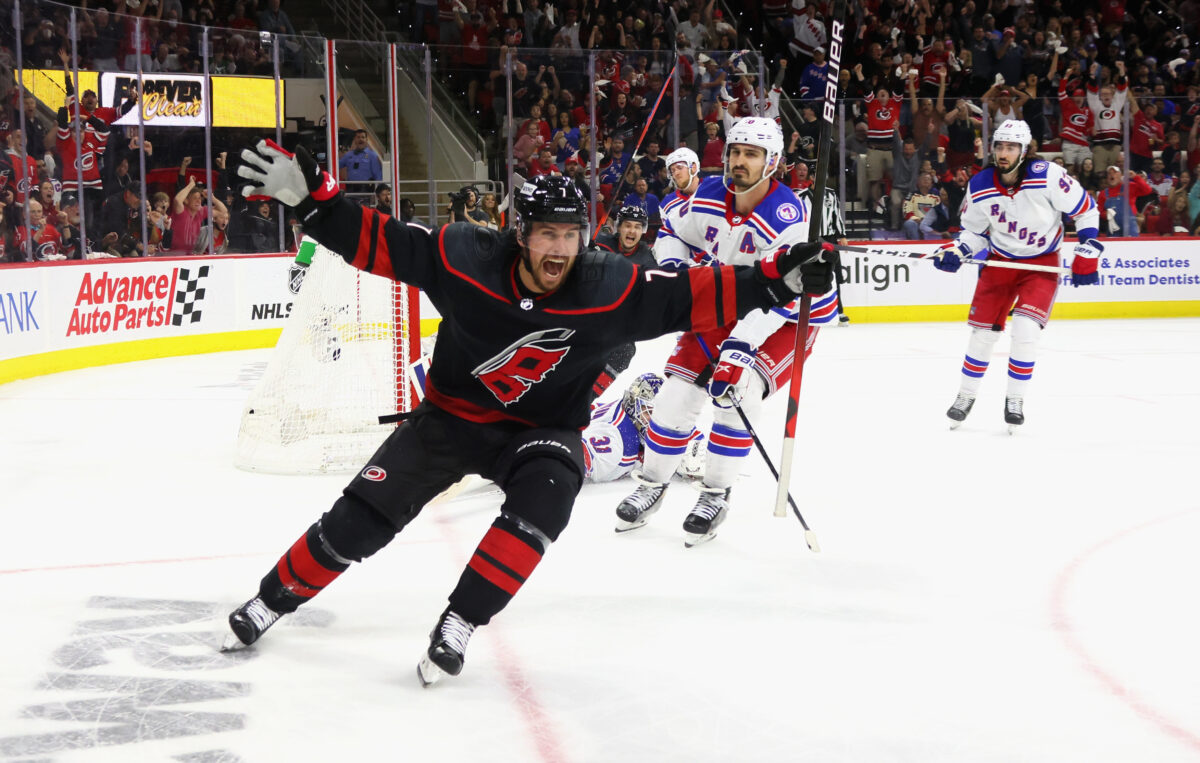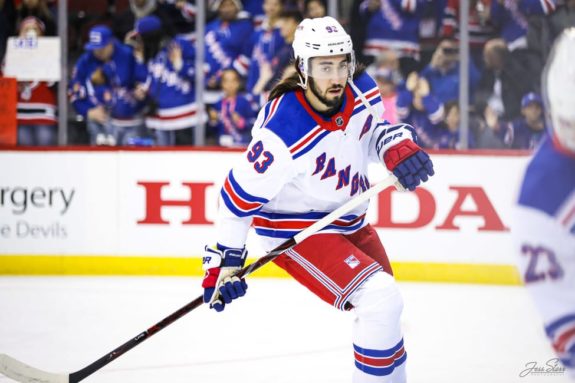Game 2 of this second-round matchup followed a similar script to Game 1. In contrast, the Carolina Hurricanes found a way to come back late in the third Wednesday night, and the New York Rangers failed to generate anything for 60 minutes Friday night. The result was a 2-0 defeat, which puts the Rangers in the debilitating position of having to win four of the next five games in this series to advance (from ‘Rangers in 2-0 hole after getting blanked by Hurricanes in Game 2 loss,’ NY Post, 05/20/22).
Carolina was heavily favored coming into this series, but Game 1 instilled a belief that it may be a more even contest than we thought. Take away the empty-net tally in Game 2, and it was another one-goal game. However, watching the last match saw the Rangers unable to generate anything, at 5-on-5 or on the power-play, making the score deceiving.
As is the case often in the postseason, special teams were the difference. The Rangers went 0-for-4 on the power play and yielded a short-handed goal. A strength of theirs all season seemed lifeless and costly in Game 2, ultimately winding up with former Blueshirt Brendan Smith capitalizing on a tap-in goal while a man down.

The Hurricanes suffocated the Rangers all night, and the youngest line, the “Kid Line,” was once again the most noticeable threesome for Gerard Gallant. The series shifts to New York, where the Rangers have had success this postseason. As dominant as they are at home, Carolina lost all three road games in Round 1, so this series is far from over.
Faceoffs Are Killing the Rangers
Stop me if you’ve heard this before; the Rangers are getting dominated at the faceoff dot. It’s a tale as old as time, but the Rangers’ biggest nemesis has been winning faceoffs over the years. For some odd reason, it is something they cannot do.
In Game 1, they got wiped out, winning just 41 percent of draws taken. In Game 2, they improved slightly, winning 44 percent of the faceoffs. Mika Zibanejad, the Rangers’ No. 1 center who takes numerous pivotal draws in every game, has won just 16 of 39 faceoffs (41 percent) in the first two games of the series. The Rangers’ power play struggled mightily, and early on, which was directly attributed to an inability to win the offensive zone draws.

The Hurricanes disrupt any offensive zone pressure the Rangers have by simply covering the puck up and forcing a faceoff. When the centers tie up, the Hurricanes’ wingers are faster to help out and retrieve the puck. Ask any coach in the league; each faceoff is a five-man operation.
You will not win each draw clean, so it is pivotal for the wingers and, in your zone, even defensemen to come help out. Carolina does that exceptionally well, and the Rangers do not. It has cost them substantially over the first two games, and they have to find a way to get better as the series advances.
Big Names, Little Production
The Rangers’ one goal in this series was scored by Filip Chytil and assisted by Alexis Lafreniere, a combined cap hit of $3.225 million, courtesy of Cap Friendly. That means $71.883 million worth of players have yet to produce a point over the first two games.
Artemi Panarin ($11.642 million), Chris Kreider ($6.5 million), and Zibanejad ($5.35 million) have all been focal points of the Rangers’ offense this season. If they don’t start to impact this series in Game 3, the team will be in an awful spot.
Related: 5 Matchups the New York Rangers Need to Overcome the Hurricanes
In comparison, Sebastian Aho, Carolina’s top forward, has two goals and an assist over the first two games, including the game-tying goal in Game 1. Aho, unlike the Rangers’ big names, has impacted what has been a hard-fought and tight-checking series thus far. Now, in the confines of their home arena, it’s time for Panarin, Zibanejad, and Kreider to do the same.
The playoffs always bring an added layer of intensity and defense, and it’s rare to see big names on one team all contribute at once. But in the case of the Rangers, no one has been able to step up and generate offense during the first two games. And the lack of offensive production and frustration seems to be creeping into the defensive games of these players as well.
Kreider took two penalties in Game 2, and Aho’s tying goal in Game 1 resulted from a half-hearted backcheck by Panarin. After the initial sprawling save by Igor Shesterkin, Panarin failed to check Aho, allowing him to tuck in his own rebound.
Reasons for Optimism in New York
Despite trailing 2-0 in the series, there is still hope for the Rangers. I alluded to the Boston Bruins, who were also down 2-0 before winning the next two games on home ice and evening the series. If the Rangers can similarly defend home ice, we once again have a series.
Gallant’s group had defensive lapse after defensive lapse in the first round. But thus far, Round 2 has shown a seemingly more mature group, one that is making it hard for a team as great as the Hurricanes to generate offense of their own.
The “Kid Line” has been the Rangers’ best all season, a positive sign for what’s to come on future runs. They have worked well together, generated pressure, sustained a forecheck, and scored. But right now, the focus is not on where this team could be in 2-3 years. The focus is on how they can beat the Hurricanes in the second round.
The truth is, they are not far away from being able to do it. One bounce their way in Game 1, and this series is tied. One offensive shift in Game 2 and this series is tied. But two solid games at home, and the result is, you guessed it, a tied series.
The Rangers have the talent to get it done. But do they have the adaptability to execute when the goings get tough in the postseason? That remains to be seen, and thus far, against the ‘Canes, the answer has been no. With Game 3 fast approaching, we will see if the Rangers’ big guns can adapt from a challenging Game 2 and turn the tables at Madison Square Garden.